Morocco’s deserts start at the south and east of the Atlas Mountains, where the climate becomes very hot and dry. Quiet and sheet in size the Sahara Desert has an area of 5,717,000 square feet (9,200,000 square kilometres) and is the largest hot desert in the world. In particular, the Sahara’s terrain is rugged with barren plateaus and little sand, as its relentless winds blow away grains leaving bare rock and boulders.
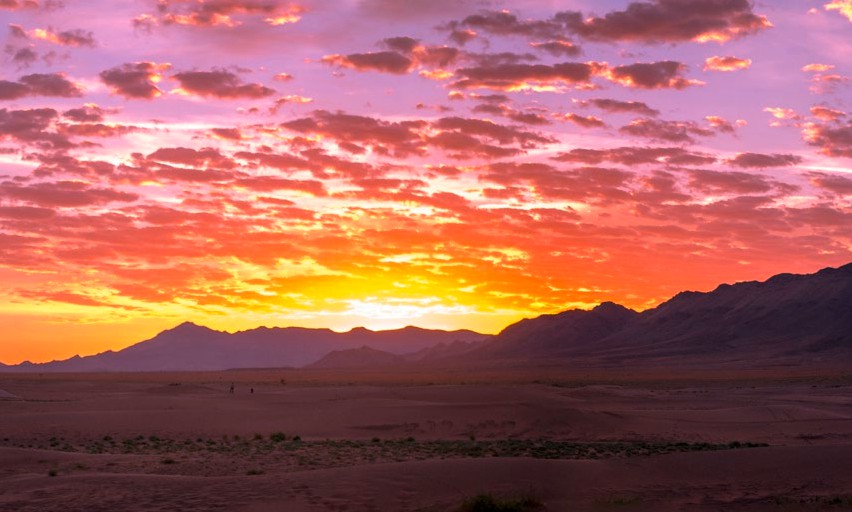
Beautiful Deserts of Morocco
Visitors to Erg Chebbi and Erg Chigaga will be blown away by the vast, flat areas of the desert containing sand dunes up to 500 ft (150 m) in height created by the wind with little vegetation.
Merzouga Desert
Merzouga Desert is located on the edge of the Sahara Desert and is a rich with an ochre-brown colour. The dusty town itself is said to be the gateway to the vast Erg Chebbi dunes – large seas of dunes formed by wind-blown sand. Merzouga has also been described as a ‘desert theme park’ that was once said to flourish as a tropical jungle until it was turned into a desert by God.
Visitors can stay a night under the stars or in a bivouac, hike the long sand dunes or take a camel ride to admire the wild landscapes.
Agafay Desert
Driving from Marrakech to Agafay, visitors will pass many orange groves and as the land gets more barren, away from the city tourists can aspire to freedom. The Agafay Desert extends over several hundred acres and its rocky terrain and white dunes, called regs, are similar to those in the Sahara.
Many tracks run between canyons and moon-like dunes in Agafay and the area is dotted with Amazigh villages offering the chance for visitors to immerse in culture, speak with the locals while drinking Moroccan tea and soak up the scenery. The latest trendsetting attraction in the desert is glamping, where several luxury glamping and stone camps in the desert have been set up for tourists who want tranquillity and can bed down under a starry night sky and sleep in a Berber tent or bivouac.
In the middle of the desert, you will also find an oasis, home to plants, turtles and frogs. While thrill seekers can venture out over expanses of sand in a 4×4 or quad bike, or a take a camel ride led by a villager. Mountain biking, hiking and horseback riding is also popular at Agafay.
Zagora Desert
The rocky and arid Zagora Desert is set in the Draa River Valley region at the base of the Zagora mountains. This longest river of Morocco starts in Ouarzazate and there are many historical sites in its vicinity including Kasbah Aït Benhaddou, a great example of earthen clay architecture of the region that has been a UNESCO World Heritage Site since 1987 and is home to many film sets including Gladiator.
The desert is dotted with fortresses and Kasbahs surrounded by palm groves and overhung by a rocky massif.
For those seeking adventure rent either a 4×4 or a buggy, to drive the terrain. Camel riding is also available and glamping among the stars is popular.
Discovering pre-desert territories of Morocco
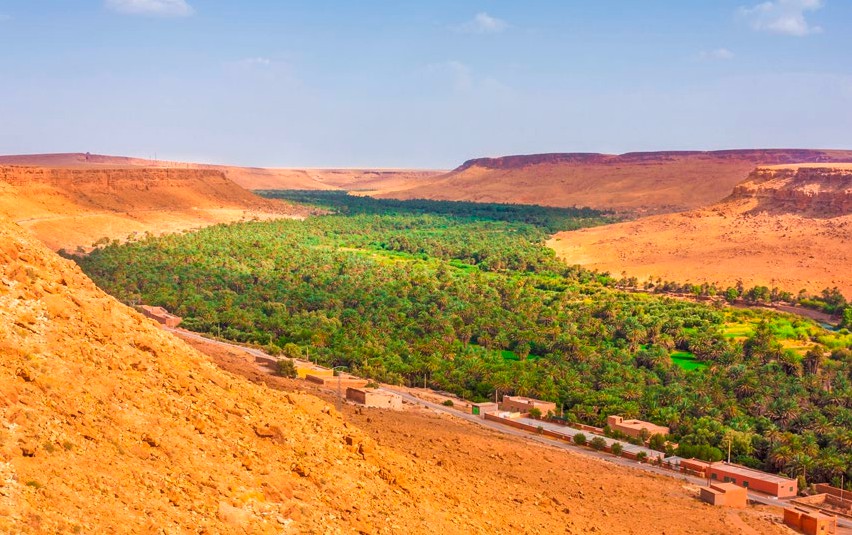
In the vast expanse of Morocco lie pre-desert territories that boast unique and captivating nature, from the ancient heritage of Ouarzazate to the desert allure of Errachidia and Figuig’s serene oasis, these destinations are perfect for those looking for adventure while discovering the secrets of Morocco’s breath-taking landscapes.
Ouarzazate, known as the ‘Door of the Desert,’ is a mesmerising blend of natural beauty and historical charm. Its stunning landscapes feature rugged mountains, lush oasis, and ancient Kasbahs that take visitors on a journey back in time. This city offers the chance to explore the mesmerising Ksar Ait Benhaddou, a UNESCO World Heritage site fortified village formed of ancient Kasbahs, labyrinthine alleys, and intricate architecture.
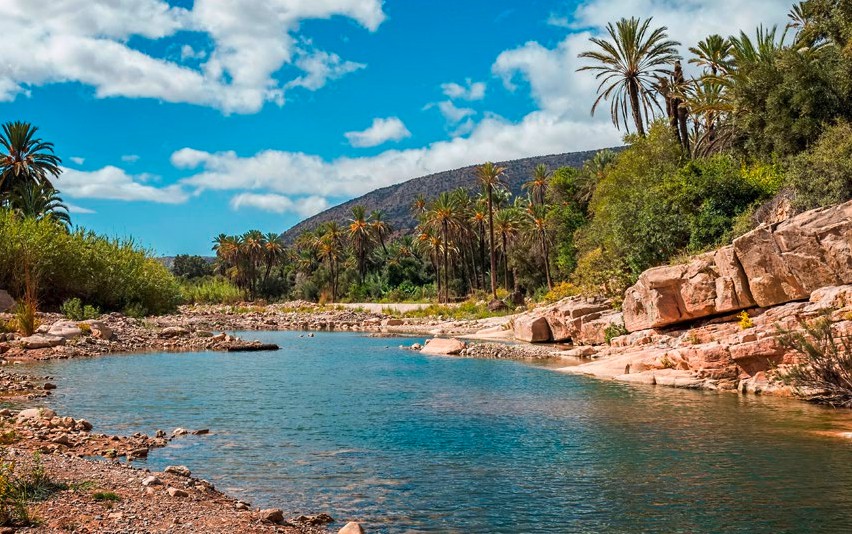
Nestled at the foot of the High Atlas Mountains, the region also offers thrilling opportunities for adventurers like trekking or rock climbing its breath-taking cliffs and canyons, as well as quad biking through the desert traversing sand dunes, dry riverbeds, and rocky paths. Furthermore, to take in all the natural landscapes that the region has to offer, visitors can also soar above the desert in a hot air balloon for a unique perspective of the surroundings.
Errachidia presents an unparalleled opportunity for nature and adventure enthusiasts to immerse themselves in the captivating landscapes of the region. As the gateway to the Sahara Desert, Errachidia offers a tapestry of exciting experiences from embarking on camel treks that venture deep into the heart of the dunes, where visitors can
witness breath-taking sunrises and sunsets against the golden sands, to exploring the intricate canyons carved by the Ziz River, which unveil geological wonders, ancient rock formations and Erfoud’s fossil-rich regions through the centuries. For the thrill-seekers, the towering dunes of the Sahara become a playground for sandboarding, amidst the stark beauty of the desert landscape. When night falls, the clear desert skies provide a canvas for stargazing, and travellers can join the multitude of guided tours offered, discovering the many oases hidden amidst the arid terrain, part of a luxuriant palm grove rich of dozens or so varieties of dates.
Figuig, a hidden oasis on the eastern edge of Morocco, is a picturesque town close to the eastern border renowned for its oasis and traditional Amazigh culture, offering a unique blend of natural beauty, history, and authenticity. The town’s most striking feature is its lush palm groves, which stand as a testament to the resilience of its inhabitants against the arid desert environment building iconic intricate underground water channels, known as ‘khettaras,’ which have sustained Figuig’s agriculture for centuries. This remote paradise is perfect for hikers to wander through lush palm groves and discover the transition from the oasis to the desert landscapes, showing the diverse ecosystems of the region.
Hiking the Desert Territories of South Morocco
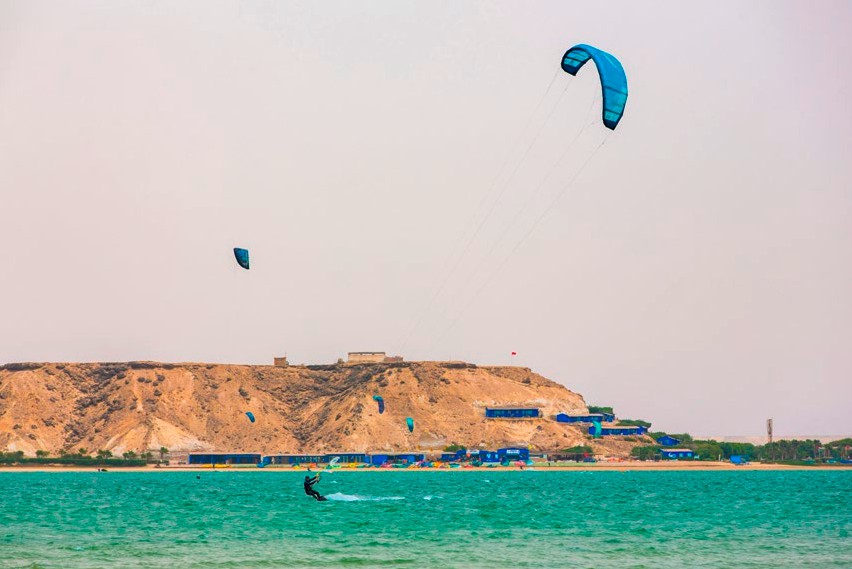
In the enchanting realm of South Morocco, travellers embark on extraordinary journeys through the desert territories, each offering a unique tapestry of history, nature, and cultural heritage. Among these regions are Guelmim- Oued Noun, Laayoune-Sakia El Hamra, and Dakhla-Oued Eddahab, each defined by rivers and distinguished by their remarkable features and exciting activities of the area.
Nestled in the southwestern corner of Morocco, Guelmim-Oued Noun offers both nature enthusiasts and adventure seekers an unparalleled journey. From prehistoric engravings to the region’s fortified Kasbahs and ksour, Guelmim-Oued Noun is a window into ancient civilizations that once thrived in these lands, while also offering a magical
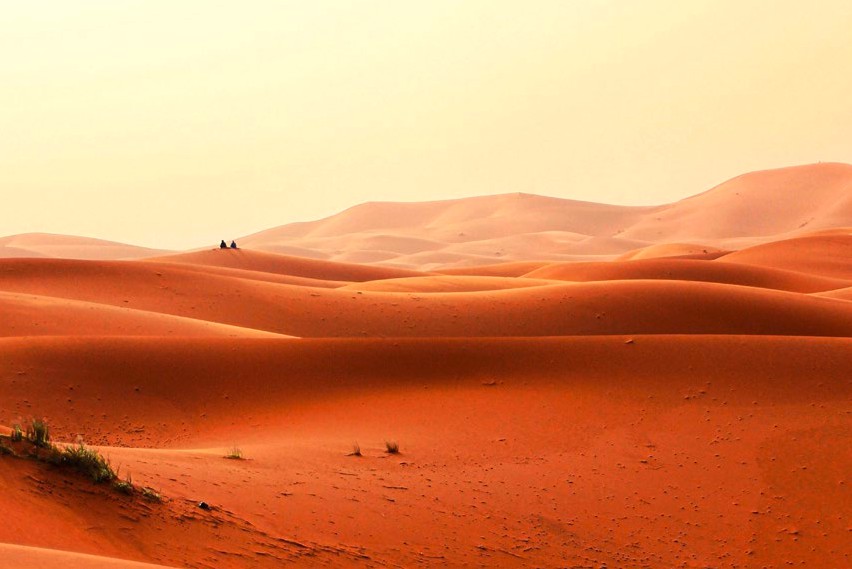
Saharan landscape perfect for adventurers to explore its raw beauty, from trekking through the vast desert expanse to experiencing the oasian tourism and the nomadic way of life through camel treks. Thrill-seekers can engage in off-roading escapades, dune bashing, and sandboarding, adding an adrenaline rush to their desert experience. Along the Atlantic coastline, its virgin beaches invite travellers to experience a new sense of serenity, offering soft sands and soothing waves.
Laayoune-Sakia El Hamra, bounded by the gracious Sakia El Hamra River, lies this Saharan jewel rich in ancient archaeological sites. From camel treks offering a glimpse into the timeless nomadic lifestyle that has thrived here for centuries, to its virgin beaches that stretch along the coastline or its steep cliffs and Akhfenir sinkhole, there are many exciting activities to discover the natural diversity that defines this region. Its untouched Atlantic Ocean coastline is blessed with a very varied natural environment, which is the unspoiled setting of Khenifiss National Park and its Naïla lagoon, known for rich marine life and perfect for birdwatching and fishing.
The region of Dakhla-Oued Eddahab, touched by the Eddahab River, presents a landscape of stunning diversity – from sprawling deserts and vast plains to majestic mountains and hidden oasis. For nature enthusiasts, the Dakhla National Park is home to a wide range of rare and diverse flora and fauna native to the area. Spanning over 50,000 hectares, travellers can find over 360 bird species, including the iconic flamingo, and explore the park’s coastal wetlands, lagoons, and dunes. Furthermore, species like desert foxes, jackals, and the tree-climbing goats, autochthone to Morocco, also inhabit the region and lucky visitors will be able to spot them in the park.
Other exciting activities to enjoy in the area include off-road desert safaris, dune bashing, and sandboarding, or kite surfing, land sailing, surfcasting and snorkelling to enjoy the beautiful coast.
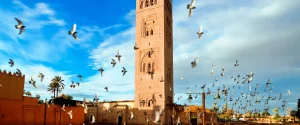
Leave a Reply